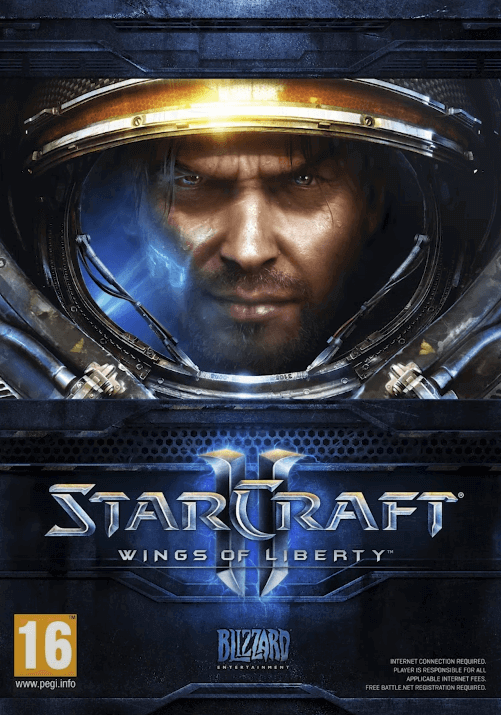Formation of E-sports

How cybersport rose from its knees...
Previously, we have already conducted a brief excursion into the history of the birth of cybersports. Then we focused on outlining the picture of the early competitions, how the life of cyber athletes looked like and how the industry came into being. Let us take a couple of years forward...
It's 2008 and eSports is going through hard times. The global financial crisis has triggered a monetary apocalypse via bloated mortgage bonds. If you want to know more details about the causes of the crisis - watch "Game for Downfall". There is an explanation of those events in a fairly easy way for laymen. But since the article is about eSports, I should go on to explain the consequences of the market crash for the industry...

By the end of 2008, 2,600,000 Americans had lost their jobs, in February 2010 the number of unemployed rose to 8,800,000 people. Bank savings and pension savings of citizens were lost. In total, approximately two and a half trillion dollars were lost. The total damage from the 2008 crisis amounted to more than eight trillion dollars.
In such circumstances, it would hardly occur to anyone to develop the then fragile virtual competition industry. Times were not so good, everyone suffered losses. In October 2008 the share price of Electronic Arts, the biggest publisher, dropped 75% from $50 to $15. Shares of Activision Blizzard and Nintendo plummeted 51%. Franchises also suffered. Warner Bros. purchased the rights to the Mortal Kombat series for mere pennies.
However, in the same dark 2008 were the companies that saw the future of e-sports. Even then, the future of E-sport was run by those who were able to recover from the blows of fate on the wallet. The conditions of almost zero competition opened up opportunities. So, despite the losses, among the pioneers were the same Activision Blizzard, promoting the already sensational StarCraft. We had to wait just two years for a new breath of fresh air.
In 2010, StarCraft II: Wings of Liberty came out. The game was initially conceived as a cyber-sports discipline. The second part was developed because of the phenomenal success of the first StarCraft game in South Korea, where it became a cult success by the end of the noughties. It's a shame to see a game that owes so much to cyber sports retire these days...

However, the integration of the most popular discipline at the time did not go as smoothly as we would have liked. The transition to a new version of StarCraft was complicated by red tape between the Korea E-Sports Association (KeSpa) and Activision Blizzard.
Blizzard wanted royalties and demanded that KeSpa officially acknowledge that the development company was the sole copyright holder for the StarCraft series; KeSpa believed that StarCraft was as much a sport as soccer and/or athletics. Negotiations between the companies reached a stalemate, and Activision Blizzard decided to abandon futile attempts to settle the conflict and signed a contract with South Korean channel Gom.TV, this agreement expanded viewership and fueled interest in future tournaments...

In August 2010 the first season of the Global StarCraft II League, GSL, began. In the future, the league will become a fundamental league with more than four dozen seasons. To this day, the GSL is still considered the most prestigious StarCraft II tournament. It is hard to believe that just two years ago many investors gave up on eSports, and by mid-2010 the organizers were writing five-figure checks to their players...
Thanks to the development of the Internet, in 2011 the number of spectators at the popular American league "Major League Gaming" - MLG increased by 1,700,000 spectators in just one year. And already in 2012 the number of spectators increased to 11,700,000. Over time, MLG executives signed a contract with Gom.TV that allowed Korean players to play not only at home, but also in European countries.
The success of StarCraft II was a shining star for the rest of the franchise. But neither the prize money nor investments from sponsors could solve the one sore point: there was no contract system between players and coaches.
In those years, and unfortunately still to this day, the coach invested all his energy and time in a talented player, and he could leave for a more financially stable partner, breaking the former coach's heart.
To put it crudely, there was a practice with legalized theft of young talents. Everything was based solely on trust. The problem was particularly acute in team disciplines, especially in Dota 2. Huge prize money at The International prompted managers to switch squads one month before the big tournament. The insane transfer of players was regulated only in 2021 through time limits and penalties.
But stop!
We started the story of how bad things were, and all of a sudden we moved to prize money, big tournaments, and the biggest problem was uncontrollable transfer of players, not the perennial problem of lack of money...
Despite the fact that modern eSports owes much of its formation to StarCraft, there was one more "big player" in the party. And this "player" appeared in 2007, initially having nothing to do with video games...
You might have had a perfectly reasonable question: "Why, when it comes to cybersports, do we mention StarCraft in the first place?"
Well, there are two reasons for that: the first reason is that the first StarCraft engine gave birth to the new eSports genre that is still dominant today. The second reason is that it was StarCraft that inspired some people to create the Twitch infrastructure.
It was Justin Kahn who first came up with the idea of online streaming. He became obsessed with the idea where he would transform his life into a movie; every move, every action or word uttered would be broadcast live, and viewers would watch it while chatting and discussing everything they saw.

Then, in the spring of 2007, Justin attached a camera to his head and didn't turn it off for a minute for eight months, only when he went to the bathroom or to the bathroom. The incarnation of "The Truman Show" quickly gained viewer attention, and Justin himself became a local Internet star. They didn't think long about the name of the project and called it simply Jastin.TV.

The website "Jastin.TV" offered a system of direct interaction between viewers and Justin himself through broadband Internet broadcasting. His friend Emmett Scheer helped Justin to realize the idea.
Back in the spring of 2007, Justin experienced firsthand all the "charms" of his brainchild: adequate viewers ordered him a pizza at home, the inadequate - reported to the services of a fake fire at the address of Justin's residence, sometimes "inviting" to his home emergency response teams ...
"We're trying to create a new media genre. This is the beginning of what could be very popular," Justin said in 2007, and he was right.
Soon people wanted to feel in Justin's shoes and began to create their own channels, doing on the broadcasts a variety of activities. Users streamed their lives, some even saw in "Jastin.TV" an opportunity to demonstrate their video game skills to the world; however, no one ever dared to speak about cyber sports. The failure of the DirecTV's Championship Gaming Series in 2008 aroused fears that Jastin.TV would meet the same fate. It was a depressing year in 2008, and any startup could burn out in a matter of days.
But then came the turning point: the beta of StarCraft II was released. Justin and his team were up all day playing strategy. And then they came up with another genius idea.
With a background in commentary, the "Jastin.TV" team realized the potential of gaming and eSports, and realized they needed to take action.
June 6, 2011 "Twitch.TV" officially went live, but it was still the same "Jastin.TV" but with a focus on gaming. Free streaming, accessibility, and support for millions of viewers online without any loss of quality - all these qualities of "Twitch.TV" were immediately appreciated by tens of thousands of gamers around the world.
Before Twitch.TV, online broadcasts were severely limited in audience reach, with just one broadcast costing $18,000, but with the advent of Twitch.TV, organizers could make money on their own through the service's advertising model. Championship broadcasts became increasingly popular. "Twitch.TV began working with large organizations such as ESL and DreamHack. By that time, Twitch.TV had over 1,500,000 viewers. More and more companies wanted to sign contracts with Twitch.TV management to broadcast their tournaments.
In March 2013, 28,000,000 unique viewers per month watched the broadcasts, and by the end of 2013, more than 45,000,000. By January 2015, Twitch.TV had a monthly audience of 100,000,000 viewers. In addition to the growing popularity of cybersports broadcasts, accessibility and quality of connection, "Twitch.TV" offered investors viewing statistics and tracking of advertising links, which allowed a clear demonstration of the return on all investments in a particular discipline.
On February 10, 2014, Jastin.TV was finally renamed Twitch Interactive, Inc. and Twitch finally beat television in viewership. Online broadcasts were not tied to the broadcast schedule, and matches could last twenty minutes, forty minutes, or as long as two hours. "Twitch, on the other hand, worked around the clock, giving players and fans alike the flexibility of the mode.
